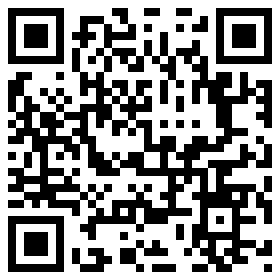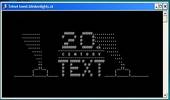Quick Response codes began as a novelty, but as the prevalence of QR code reading technology has increased, so has the popularity of their use. There is a short history behind QR codes but that has not held back the growing popularity of these little squares of black on white patterns.
The QR code was first invented in 1994 by developers at a subsidiary of the Toyota Corporation in Japan, and they were intended to provide an alternative to the Barcode that could be read at a greater speed. However, it turned out that the primary advantage of a QR code was that it actually could carry information such as text, pictures and URL links embedded within its blocks of pattern.
Initially, the QR was a software used to entertain consumers by challenging them to decipher its codes through the use of a limited number of devices. In the early days, QR codes displayed in England and Japan were for attention getting purposes only. The introduction of QR technology to the mainstream market has been waiting for an increase in availability of code readers in common place devices. That time is now.
QR code readers come standard in many Android phones, Android tablets, Apple iPhones, iPads as well as in handheld gaming consoles. This means that more and more people are starting to have immediate access to a reader via their pocket electronics. Now is the prime time to increase the distribution of QR codes to the masses.The technology is widespread and the code it self is becoming a familiar sight, but what can a QR code actually do beyond just looking high-tech?
As mentioned earlier, there is a wide array of information that can be contained in a QR code and an equally large array of outcomes that can be achieved when they are read. Scanning a QR code with a reader can produce different beneficial advertising results. The main advantage is that internet content can be transmitted immediately to the device. For example, contact information or product specifications and images can be immediately downloaded from a print location. To advertisers, this means website content can be added to magazine ads and public signs. These types of advertisements are common place in some countries, but consumers of some nations are still lagging slightly in their common use of this technology.
The QR code was first invented in 1994 by developers at a subsidiary of the Toyota Corporation in Japan, and they were intended to provide an alternative to the Barcode that could be read at a greater speed. However, it turned out that the primary advantage of a QR code was that it actually could carry information such as text, pictures and URL links embedded within its blocks of pattern.
Initially, the QR was a software used to entertain consumers by challenging them to decipher its codes through the use of a limited number of devices. In the early days, QR codes displayed in England and Japan were for attention getting purposes only. The introduction of QR technology to the mainstream market has been waiting for an increase in availability of code readers in common place devices. That time is now.
 |
| QR Code image containing this blog's homepage URL |
As mentioned earlier, there is a wide array of information that can be contained in a QR code and an equally large array of outcomes that can be achieved when they are read. Scanning a QR code with a reader can produce different beneficial advertising results. The main advantage is that internet content can be transmitted immediately to the device. For example, contact information or product specifications and images can be immediately downloaded from a print location. To advertisers, this means website content can be added to magazine ads and public signs. These types of advertisements are common place in some countries, but consumers of some nations are still lagging slightly in their common use of this technology.

 About
About



